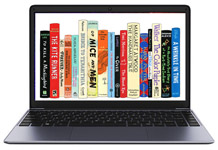
E-JASL: Electronic Journal of Academic and Special Librarianship (1999-2009, Volumes 1-10)
Date of this Version
Summer 2008
Document Type
Article
Citation
Electronic Journal of Academic and Special Librarianship (Summer 2008) 9(2). Also available at http://southernlibrarianship.icaap.org/content/v09n02/brown-sica_m01.html.
Abstract
[First paragraph]
Library 2.0 applications benefit library users by providing rich, peer-generated content that adds value to online library databases and systems. However, not all of this shared content is beneficial, for it’s possible for library users to abuse library 2.0 applications by uploading words, pictures, or other content that constitutes hate speech. Internet lawyer Christopher Wolf warns of, “ … the sudden and rapidly increasing deployment of Web 2.0 technologies to spread messages, sounds and images of hate across the Internet and around the world” [1]. As academic libraries make available Web 2.0 systems that allow user-generated content, they must incorporate into these systems quick, effective, and consistent means of dealing with user-generated hate speech.
Conclusion
The problem of hate speech in library 2.0 applications is likely to increase and will require academic libraries to establish policies and procedures to prevent it. Libraries will need content guidelines that address hate speech, and they will need systems able to identify and eliminate it when it occurs in library 2.0 applications. By taking measures to deal with hate speech, libraries will be able to ensure that user contributions enrich library databases without poisoning them.
Included in
Communication Technology and New Media Commons, Scholarly Communication Commons, Scholarly Publishing Commons, Social Media Commons


Comments
Copyright 2008, the authors. Used by permission.